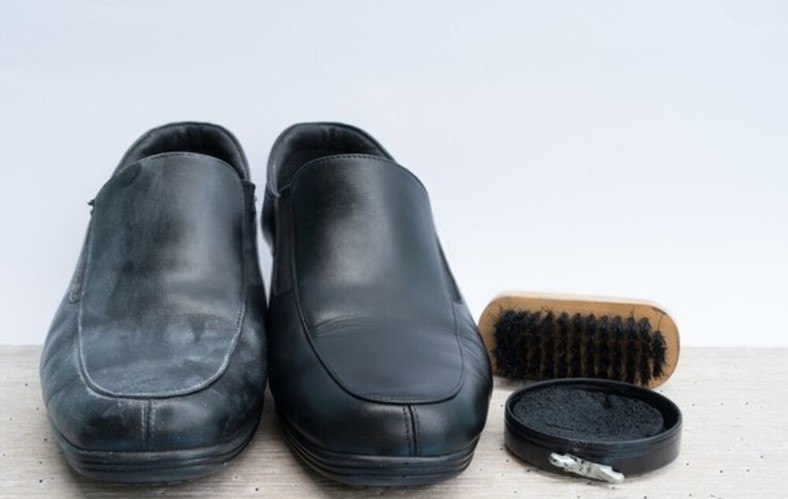As prized possessions that complement our attire, leather shoes elevate our style and demand meticulous care. However, even the finest leather can succumb to the inevitable passage of time, resulting in unsightly cracks that compromise their aesthetics and durability. Fret not; with the right knowledge and techniques, you can effectively restore cracked leather shoes, restoring their former glory and ensuring their continued wearability.

Image: www.hoodmwr.com
Understanding Leather and the Causes of Cracking
Leather, derived from animal hides, is a durable and versatile material renowned for its strength, suppleness, and natural beauty. However, factors such as exposure to the elements, improper care, or simply the passage of time can weaken leather’s structure, causing it to crack. Identifying the underlying cause of the cracks is paramount in preventing their recurrence.
h2>Essential Tools and Materials for Leather Repair
Before embarking on the restoration process, gather the necessary tools and materials:
- Leather cleaner: Specifically formulated to remove dirt and grime without damaging the leather.
- Soft cloths or sponges: For applying cleaning solutions and conditioning products.
- Leather conditioner: Nourishes and moisturizes leather, preventing further cracking.
- Toothpick or small brush: For gently removing loose debris from cracks.
- Leather filler: A paste-like substance that fills in cracks, creating a smooth surface.
- Sandpaper (fine-grit): For smoothing the repaired area and blending it with the surrounding leather.
- Leather paint (optional): To match the color of the shoes and conceal the repair.
Step-by-Step Guide to Restoring Cracked Leather Shoes
- Thoroughly Clean the Shoes: Remove dirt and debris using a leather cleaner and a soft cloth. Avoid using harsh chemicals or abrasive cleaners that could damage the leather.
- Remove Loose Debris from Cracks: Gently remove any loose dirt or debris from the cracks using a toothpick or a small brush. Do not force or dig, as this could worsen the damage.
- Apply Leather Conditioner: Generously apply leather conditioner to the entire surface of the shoes, including the cracked areas. This will help soften and moisturize the leather, making it more receptive to repair. Allow the conditioner to penetrate for at least 30 minutes.
- Fill In Cracks with Leather Filler: Use a leather filler to carefully fill in the cracks. Apply a small amount with a toothpick or a small brush, ensuring the filler completely fills the cracks. Avoid overfilling, as excess filler can be difficult to remove.
- Smooth the Repaired Area: Once the leather filler has dried, use fine-grit sandpaper to gently smooth the repaired area. Sand in the direction of the leather grain to blend the repaired area seamlessly with the surrounding leather.
- Apply Leather Paint (Optional): If necessary, apply leather paint to match the color of the shoes and conceal the repair. Use a small brush and apply thin coats, allowing each coat to dry before applying the next.
- Condition the Shoes: After completing the repair, apply a generous amount of leather conditioner to the entire surface of the shoes. This will help protect the leather and prevent future cracking.

Image: www.pinterest.com
How To Fix Cracked Leather On Shoes
Preventive Measures to Safeguard Your Leather Shoes
To prolong the lifespan of your leather shoes and minimize the risk of cracking, follow these preventive measures:
- Regular Cleaning: Clean your leather shoes regularly with a mild leather cleaner and a soft cloth. This will remove dirt and grime that can damage the leather.
- Proper Conditioning: Regularly condition your leather shoes with a high-quality leather conditioner. This will keep the leather soft and supple, reducing the likelihood of cracking.
- Protection from the Elements: Avoid exposing your leather shoes to extreme heat, cold, or moisture. When not in use, store your shoes in a cool, dry place.
- Use Shoe Trees: Shoe trees help maintain the shape of your shoes and absorb moisture, preventing